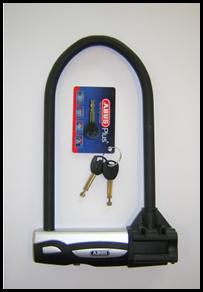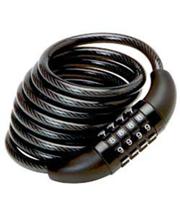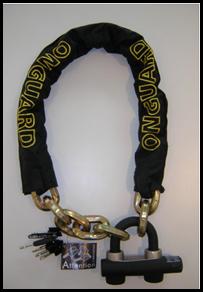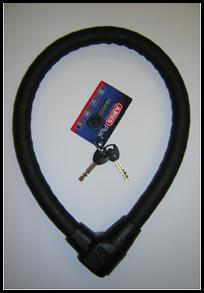Appendix B: Types of Locks
The types of locks and how cyclists use them can contribute to your local bicycle theft problem. There is currently a wide range of available bicycle locks, each differing in (for example) material, intended use, and mechanism by which they are supposed to prevent bicycle theft. The term "secure" is relative, as security against bicycle theft depends not only on the lock, but also on the bicycle-parking furniture and the broader parking environment, as well as on who is trying to steal a bicycle, and with what resources. Hereafter, "secure" refers to a lock that can withstand an attack lasting three minutes or more by a thief using readily available hand tools. Some robust locks are sold with an insurance guarantee for the bicycle they secure. The user must register the bike for the insurance to be valid.
It is recommended that cyclists use two locks of different types, as this will defend the secured bicycle against multiple perpetrator techniques (e.g., if a cyclist uses a D lock and a chain lock, then a thief must apply both "levering" and "cutting" or "striking" to free the secured bicycle).

D or U lock

Cable or coil lock

Chain and padlock

Armored cable lock
D or U lock—a D- or U-shaped steel bar that is closed at one end, with a removable section that a key can lock. The lock's strength depends on materials and quality. Such locks can be vulnerable to levering but are resistant to cutting.
Cable or coil lock—a many-stranded steel cable enclosed in a plastic casing, with an integrated lock or looped end through which the user secures the shank of an additional lock. The cables come in various thicknesses. These locks are vulnerable to cutting, and thieves can easily sever them using available hand tools.
Chain lock—a length of chain (often fabric- or plastic-coated) combined with a securing padlock or mini-D lock. Chains can be very robust, though the lock's strength depends on materials and quality. These locks are vulnerable to striking if applied incorrectly. Poor-quality chain locks are also vulnerable to cutting with bolt croppers and pneumatic cutting tools.
Armored cable lock—a steel cable core covered with a series of rotating metal tube sections to protect the cable against cutting. Armored cable locks usually have an integrated locking device. Armored cables can be very robust, though the lock's strength depends on materials and quality. These locks can be vulnerable to cutting with bolt croppers and pneumatic cutting tools.
Free Bound Copies of the Problem Guides
You may order free bound copies in any of three ways:
Online: Department of Justice COPS Response Center
Email: askCopsRC@usdoj.gov
Phone: 800-421-6770 or 202-307-1480
Allow several days for delivery.
Email sent. Thank you.
Bicycle Theft
Send an e-mail with a link to this guide.
* required
Error sending email. Please review your enteries below.
- To *
Separate multiple addresses with commas (,)
- Your Name *
- Your E-mail *
Copy me
- Note: (200 character limit; no HTML)
Please limit your note to 200 characters.
